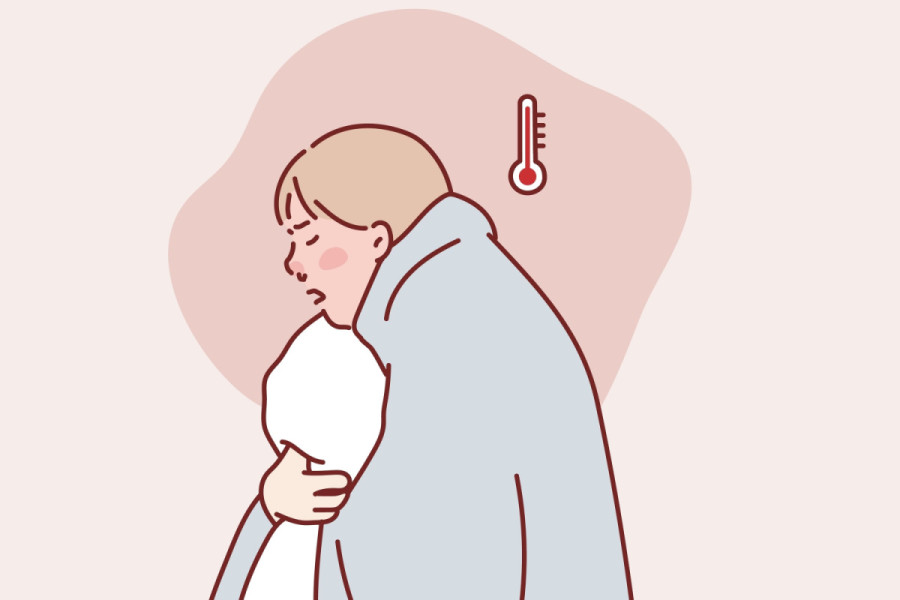Columns
Emerging rat-bite fever
Nepal must invest in broader research to understand RBF and its causative agents before it is too late.
Dr Sher Bahadur Pun
Rat bite fever (RBF), also known as “Sodoku”—a Japanese word meaning rat (so) poison (doku), is a neglected and underdiagnosed disease worldwide. There isn’t a clear consensus among the experts on the global burden of RBF. Each week, at least a dozen rat bite victims come to Sukraraj Tropical & Infectious Disease Hospital’s (STIDH) out-patient department (OPD) to seek medical advice and care for injuries. Although most victims seek vaccines against the rabies virus, almost none know the possible risk of infection by rat bites.
Over the past few years, I have seen several rat bite victims with symptoms including severe thrombocytopenia (a low platelet count) or hemorrhagic RBF. It is mainly caused by two known bacteria: “Streptobacillus moniliformis” and “Spirillum minus”. A rat bite transmits the disease, but it cannot spread from person to person. Fever, vomiting, head and muscle pain, joint pain or swelling and rash are the main signs and symptoms of Streptobacillus moniliformis. These symptoms usually appear 3 to 10 days after the bite. Complications can occur in multiple organs, such as the liver, lungs, brain, kidney and heart. If left untreated, RBF can even lead to death. Likewise, Spirillum minus shows symptoms such as fever, swelling or ulcer at the site of the bite wound, swollen lymph nodes and rash (at the bite site or all over the body), which usually develop 7 to 21 days after the bite.
A week ago, a 40-year-old male visited STIDH OPD with a two-week history of fever (on and off), swollen left axilla lymph node and pain radiating up his left arm and neck. He described that his fever usually lasts between one and two hours, either in the morning or evening, at intervals of three and four days. These signs and symptoms began two weeks after he was bitten by a rat on his left index finger. A bite mark (ulcer) was still visible at the bite site. However, there was no history of skin rash. He was treated with amoxicillin/clavulanic acids as an oral antimicrobial. A similar case was observed and treated in 2017, and perhaps that was the first reported RBF case in Nepal.
Similarly, a few days ago, a rat bite victim visited the hospital with a two-day history of swelling, tingling sensation and pain in the bite area, which radiated towards the right leg and arm. She also complained of swelling and pain over the right side of the upper part of her neck. Interestingly, she developed multiple purple/bluish-coloured spots (occasionally bleeding) in the oral cavity as well as rectal bleeding. Her laboratory examination revealed a low platelet count of 20,000/cumm (severe thrombocytopenia), while remaining blood counts, including liver function tests, were within normal range. Moreover, the patient tested negative for dengue virus. Despite observing rat bite fever cases regularly, no routine laboratory testing is performed or preferred by healthcare workers to identify the causative agent of RBF in Nepal. However, rat bite victims would likely visit specialist hospitals after developing complications.
The literature on RBF is scarce, and the few existing studies show fever, joint pain and skin lesions as common symptoms. As they are caused by either Streptobacillus moniliformis, common in the United States, or Spirillum minus RBF, a known pathogen for RBF in Asia, the two infections can be differentiated based on clinical presentation. For example, if the site of the bite is present in Streptobacillus moniliformis RBF, it heals quickly and without significant swelling or pain of lymph nodes, while the site of the bite may ulcerate (can be seen) and swelling and pain of lymph nodes might be present in Spirillum minus RBF.
Likewise, multiple joint pain is common in Streptobacillus moniliformis RBF, while this rarely happens in Spirillum minus RBF. Rashes and hemorrhagic vesicles in hands and feet can be seen in Streptobacillus moniliformis RBF. At the same time, red-brown macules (discoloured skin area) with occasional urticaria (red bumps) are visible in Spirillum minus RBF. I observed two cases of RBF in Nepal, which showed symptoms compatible with Spirillum minus RBF. Nevertheless, a woman with unexplained severe thrombocytopenia (a low platelet count) with bleeding from skin spots, rectum and anus in an unusually short period of time triggered further investigations to rule out other possible pathogens that cause hemorrhagic RBF. From my knowledge, RBF with severe thrombocytopenia or hemorrhagic RBF has not been reported elsewhere in the world.
To sum up, rats bite hundreds of Nepalis in their homes every year. However, only a very few victims visit the hospitals to seek medical advice or further evaluation and treatment. Although two pathogens are believed to be the causative agents of RBF in humans, possibilities of other pathogen/s that cause a rapid decrease in platelet count with bleeding problems or hemorrhagic RBF cannot be overlooked. Thus, we must invest in broader research to understand RBF and its possible causative agents to be well prepared for its risks in Nepal before it gets too late.




 20.12°C Kathmandu
20.12°C Kathmandu















